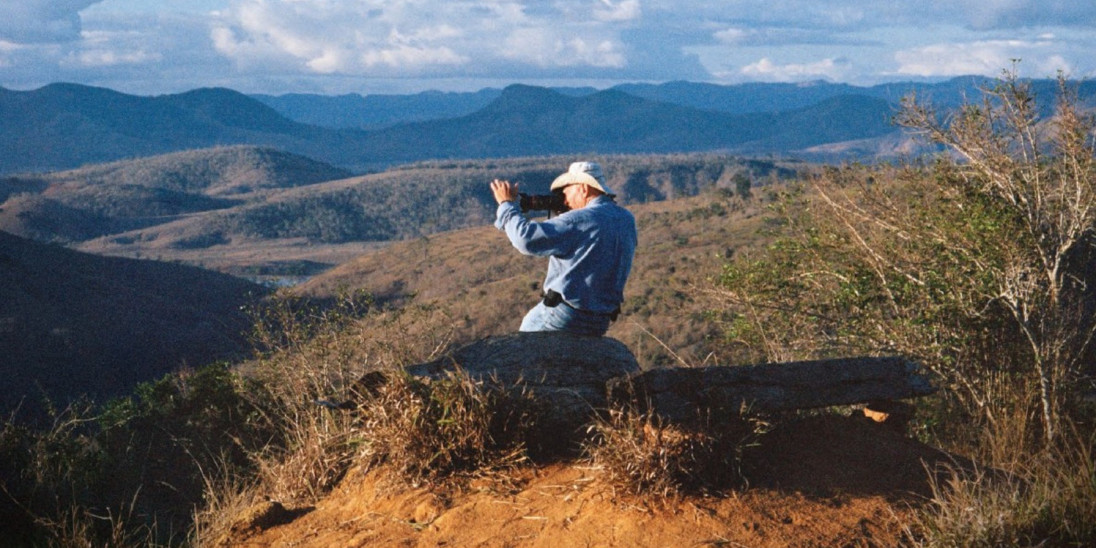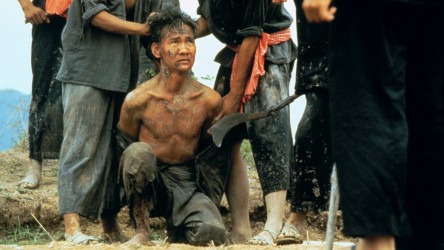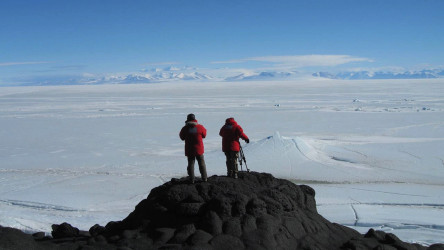The Salt of the Earth(2014)
Documentary about the life and work of photographer Sebastião Salgado over the last four decades.
Certificate
Age group15+ years
Duration110 mins


When my Lecturer told me that we were going to be watching a Documentary for Film Club, I have to admit that I was not looking forward to it. What made it worse was the fact that he kept going on about how much of a "tearjerker" or a "life changer" it was. As a result, I had judged and condemned this film before even seeing it and, by God, was I wrong.
‘The Salt of the Earth' is a 2014 documentary made by both Photographer Juliano Salgado and Film Director Wim Wenders that documents the life of Brazilian Photographer and Juliano's father, Sebastiao Salgado. Critically, it is a huge success with it gaining
overwhelmingly positive responses from many professional critics.
The main focus is on Sebastiao as his life is shown through the photos that he has taken for different projects throughout his career as a photographer. It showcases the important parts of his life, from childhood to education, from meeting his wife to developing a career with her, from his photography of the suffering and death of people in third world countries to his transition to a nature photographer. As well as making this documentary a very visual experience, Sebastiao himself narrates over his life and what the images that are displayed mean to him as well as giving context to most of them. As well as just Sebastiao, however, Juliano and Wim both do a little narration, explaining their reasons for following Sebastiao on some of his later travels in his career. Juliano, wanting to spend time with a father who was away for most of his childhood, and Wim, who is a big fan of and inspired by Sebastiao's work.
Above I have talked about how I was told that this film had been described to me as a "Tearjerker" and a "Life Changing" film. While I would agree that both terms are slight over-exaggerations, this documentary is spectacularly hard hitting and can leave someone feeling very sombre after finishing, despite the change in tone towards the end. I would describe myself as more insensitive than sensitive but, regardless, I was left with an empty feeling and a "Sick Soul," to quote Sebastiao. The use of the images, especially with Sebastiao's thoughts playing over them, really helps to give you the same sense of shame and disgust that he felt when visiting the places he did. An example of images that left me speechless were of children in open coffins, dead. The sheer sight of such a thing is very hard to react to, mainly because, as someone who lives and takes for granted the pleasures and advantages of living in a first world country, I didn't know how to react. The shocking images and the horrifying context given by Sebastiao that accompanied them were enough to make me rethink everything I had previously thought about the state of the world and the Human Condition that plagues it.
About three-quarters of the way into the Documentary, the tone of the film changes. After being so disgusted and sickened by the horrors of famine and War, Sebastiao condemns humanity's actions and decides to focus his photography on what remains of the beauty of Planet Earth, and it's non-human inhabitants. While this section of the film does feel like it is taking away from the political message of a lack of ethicality in societies, it is a much needed break from the horror and trauma of the images that depict the dead so plainly. It is much lighter in tone because this is a part of Sebastiao's life that he enjoys and loves. There's such a feel good sensation with this section because Sebastiao's family move back to his childhood home, a farm in Brazil, and transform a barren and empty landscape to a beautiful and thriving countryside, even bringing the wildlife back to inhabit the land. Sebastiao even makes contact and becomes good friends with some of the tribes that live in the Amazon rainforest and photographs them and their way of life, as well as the animals and forests that now belong to his home, which eventually becomes the Instituto Terra nature reserve.
What's wonderful about the way they have created this documentary and what makes you respect Sebastiao as a person, as well as a photographer, is that he never talks about his personal tragedies. He doesn't try and spin a sob story around his life for extra attention. He talks about his parents passing away but glosses over them quickly. He puts his real, raw emotion into talking about the horrors that he has seen, the joy he has gained from his career and the love he has for the people he has met and befriended and so much of his emotion goes into his words and pictures that the documentary becomes less of a film and more of an experience.
‘The Salt of the Earth' isn't merely a story about a photographer. It is the legacy of a man who loved capturing history as it happened, a severe criticism of the human races brutal and violent tendencies and a love letter to the sheer beauty of nature, all rolled up into one movie that I would highly recommend to anyone.
Print this review
A powerful depiction of events in Cambodia in the 1970s, when the fanatical Khmer Rouge regime killed hundreds of thousands of their own people.
Certificate

Documentary about the positive effect an "Afro Reggae" troop has on the slums of Brazil.
Certificate

Artistic documentary that shows how human creativity can empower people facing extreme kinds of poverty and hardship.
Certificate

When legendary director Werner Herzog journeys to Antarctica, the people he meets there are just as fascinating as the wildlife.
Certificate